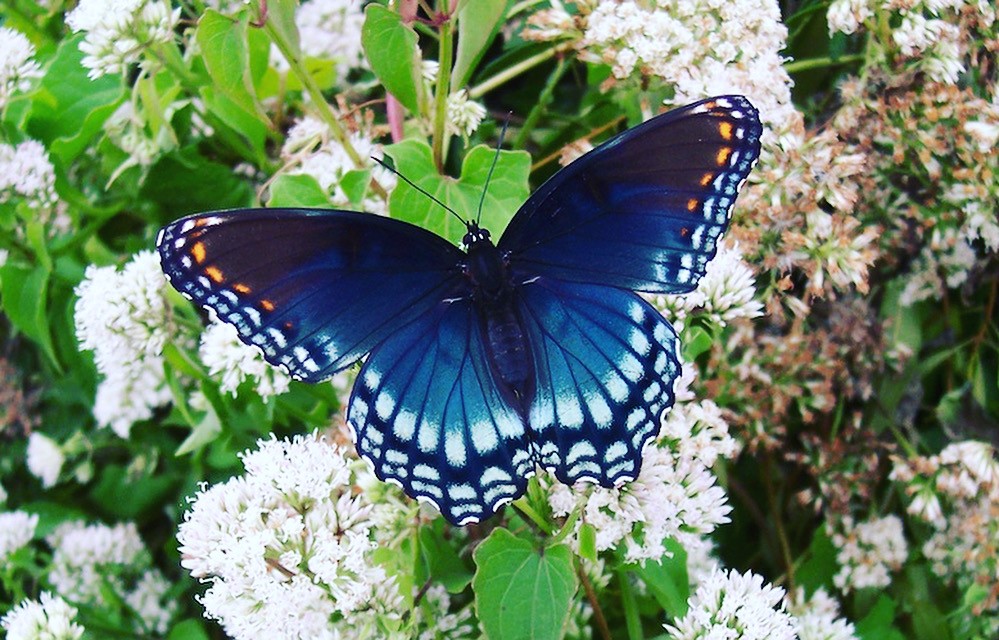Researchers Discover How Butterflies Keep Their Cool

Jan. 10, 2020 - In a study with wide-ranging implications for controlling light and heat, UC Irvine researchers led a team that uncovered key details about how butterflies adapt to varying climates. UCI mechanical and aerospace engineering graduate student and first author Anirudh Krishna and his collaborators discovered that invisible properties in the microstructures on the wings of butterflies play a vital role in thermoregulation, the balance between warming up and cooling down that regulates wing temperature. The work, “Infrared Optical and Thermal Properties of Microstructures in Butterfly Wings,” was published this month in Proceedings of the National Academy of Sciences.
The team, which includes UCI faculty Jaeho Lee, assistant professor of mechanical and aerospace engineering, and Adriana Briscoe, professor of ecology and evolutionary biology; UCI graduate student Xiao Nie; and collaborators Jorge Llorente-Bousquets (Universidad Nacional Autónoma de México) and Andrew D. Warren (University of Florida, Gainesville) discovered that the wing microstructures, which had previously been linked to iridescent coloration, actually have unique properties in mid-infrared wavelengths (the region of the spectrum responsible for thermal emission in ambient environments).
These microstructures can determine how much heat is lost from the wings into the surroundings, as well as how much heat is gained from sunlight. This capability supports thermoregulation of butterflies in various environments.
The study reveals that butterflies from warmer climates tend to have greater ability to lose heat in the mid-infrared wavelengths, while the opposite is true for butterflies from cooler climates. Regardless of where they originate, the authors found, the butterflies’ wings always reached a temperature of 20-50 degrees Celsius. These findings suggest that the microstructures play an important role in how butterflies adapt to climate extremes.
“The analysis of mid-infrared heat emission and the ability of butterflies to cool down by thermal radiation pieces together a missing link in how these butterflies adapt to extremes in climate,” Krishna said.
His Samueli School adviser, Lee, used his background in microscale heat transfer to try to understand the role microstructures play in that process. Using scanning electron microscopy, the authors analyzed the optical properties of the periodic microstructures found in the butterfly wings. “The beautiful colors of butterflies attract us all. We used engineers’ tools to study the microstructures and understand how heat can be absorbed or released,” Lee said. “To our surprise, the interesting properties were hidden in the invisible infrared wavelengths.”
The study has implications for how creatures large and small can adapt, said Briscoe. “What excites me about our findings is how it is going to open new doors to our understanding of how organisms across the animal kingdom will cope with the higher temperatures we are seeing with global warming.”
For Lee, Krishna and Nie, the findings also provide a template for designing and engineering manmade microstructures that can control light and heat. “By imitating and perfecting the millennia-old adaptations of the butterflies,” said Lee, “we have the opportunity to make giant strides in optical control and thermoregulation.”
– Anna Lynn Spitzer


